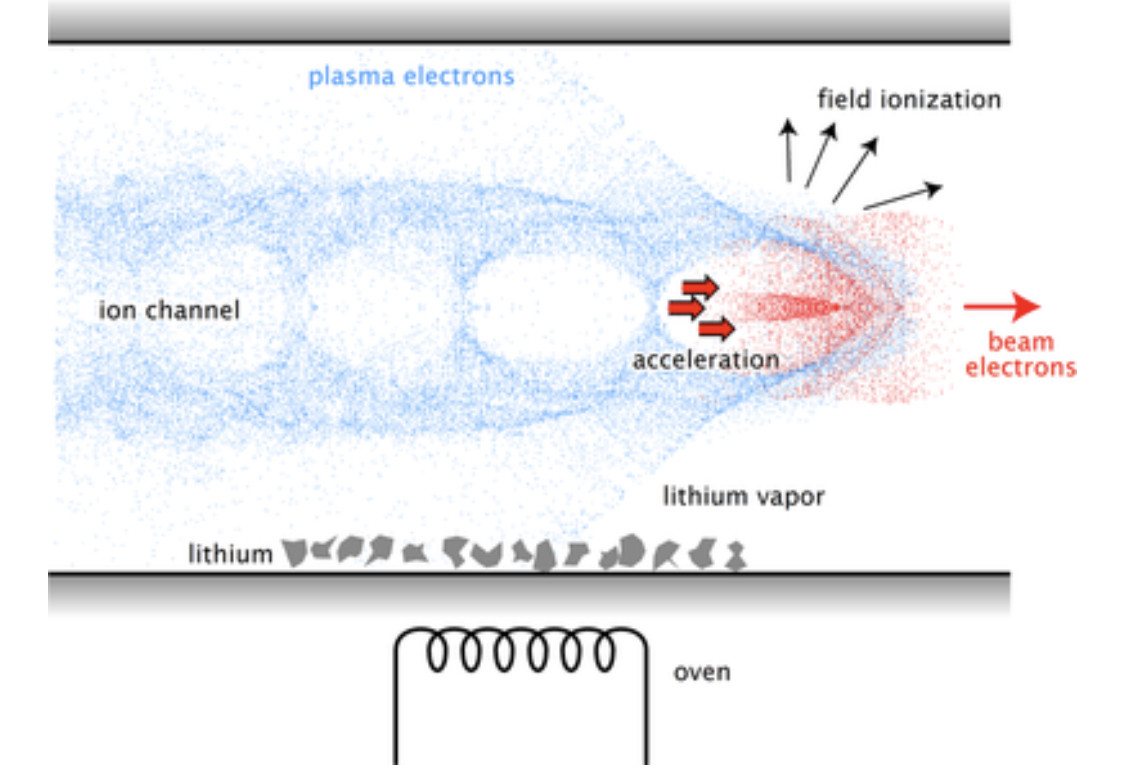🙏💗☀️God is the only Truth that Exists in all of His creation. Since forever.
A C RE AT ION
An electrolaser is a type of electroshock weapon that is also a directed-energy weapon. It uses lasers to form an electrically conductive laser-induced plasma channel (LIPC). A fraction of a second later, a powerful electric current is sent down this plasma channel and delivered to the target, thus functioning overall as a large-scale, high energy, long-distance version of the Taser electroshock gun.
Alternating current is sent through a series of step-up transformers, increasing the voltage and decreasing the current. The final voltage may be between 108 and 109 volts.[citation needed] This current is fed into the plasma channel created by the laser beam.
A laser-induced plasma channel (LIPC) is formed by the following process:
A laser emits a laser beam into the air.
The laser beam rapidly heats and ionizes surrounding gases to form plasma.
The plasma forms an electrically conductive plasma channel.
Because a laser-induced plasma channel relies on ionization, gas must exist between the electrolaser weapon and its target. If a laser-beam is intense enough, its electromagnetic field is strong enough to rip electrons off of air molecules, or whatever gas happens to be in between, creating plasma. Similar to lightning, the rapid heating also creates a sonic boom.[citation needed]
A plasma consists of a fluid of positive and negative charged particles, generally created by heating or photo-ionizing (direct / tunneling / multi-photon / barrier-suppression) a dilute gas. Under normal conditions the plasma will be macroscopically neutral (or quasi-neutral), an equal mix of electrons and ions in equilibrium.
However, if a strong enough external electric or electromagnetic field is applied, the plasma electrons, which are very light in comparison to the background ions (by a factor of 1836), will separate spatially from the massive ions creating a charge imbalance in the perturbed region.
A particle injected into such a plasma would be accelerated by the charge separation field, but since the magnitude of this separation is generally similar to that of the external field, apparently nothing is gained in comparison to a conventional system that simply applies the field directly to the particle. But, the plasma medium acts as the most efficient transformer (currently known) of the transverse field of an electromagnetic wave into longitudinal fields of a plasma wave. In existing accelerator technology various appropriately designed materials are used to convert from transverse propagating extremely intense fields into longitudinal fields that the particles can get a kick from.
This process is achieved using two approaches: standing-wave structures (such as resonant cavities) or traveling-wave structures such as disc-loaded waveguides etc. But, the limitation of materials interacting with higher and higher fields is that they eventually get destroyed through ionization and breakdown. Here the plasma accelerator science provides the breakthrough to generate, sustain, and exploit the highest fields ever produced by science in the laboratory.
What makes the system useful is the possibility of introducing waves of very high charge separation that propagate through the plasma similar to the traveling-wave concept in the conventional accelerator. The accelerator thereby phase-locks a particle bunch on a wave and this loaded space-charge wave accelerates them to higher velocities while retaining the bunch properties.
Currently, plasma wakes are excited by appropriately shaped laser pulses or electron bunches. Plasma electrons are driven out and away from the center of wake by the ponderomotive force or the electrostatic fields from the exciting fields (electron or laser). Plasma ions are too massive to move significantly and are assumed to be stationary at the time-scales of plasma electron response to the exciting fields.
As the exciting fields pass through the plasma, the plasma electrons experience a massive attractive force back to the center of the wake by the positive plasma ions chamber, bubble or column that have remained positioned there, as they were originally in the unexcited plasma. This forms a full wake of an extremely high longitudinal (accelerating) and transverse (focusing) electric field. The positive charge from ions in the charge-separation region then creates a huge gradient between the back of the wake, where there are many electrons, and the middle of the wake, where there are mostly ions. Any electrons in between these two areas will be accelerated (in self-injection mechanism). In the external bunch injection schemes the electrons are strategically injected to arrive at the evacuated region during maximum excursion or expulsion of the plasma electrons.
A beam-driven wake can be created by sending a relativistic proton or electron bunch into an appropriate plasma or gas.[19] In some cases, the gas can be ionized by the electron bunch, so that the electron bunch both creates the plasma and the wake. This requires an electron bunch with relatively high charge and thus strong fields. The high fields of the electron bunch then push the plasma electrons out from the center, creating the wake.
Similar to a beam-driven wake, a laser pulse can be used to excite the plasma wake. As the pulse travels through the plasma, the electric field of the light separates the electrons and nucleons in the same way that an external field would.
If the fields are strong enough, all of the ionized plasma electrons can be removed from the center of the wake: this is known as the "blowout regime". Although the particles are not moving very quickly during this period, macroscopically it appears that a "bubble" of charge is moving through the plasma at close to the speed of light. The bubble is the region cleared of electrons that is thus positively charged, followed by the region where the electrons fall back into the center and is thus negatively charged. This leads to a small area of very strong potential gradient following the laser pulse.

